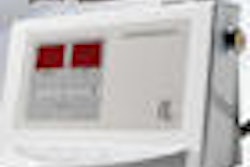Fluorescence-based caries detection methods offer some advantages but are prone to more false-positive results than visual and radiographic methods, according to a new study in Caries Research (May 31, 2011).
Researchers from Southern Cross University in Brazil, University of São Paulo, and University of Western Ontario compared the Diagnodent Pen (KaVo Dental), a fluorescence camera, visual inspection, and radiographs in detecting occlusal caries lesions in primary teeth. They also proposed a mathematic correction of the diagnostic parameters "due to the imperfect reference standard method used in the study."
Two examiners assessed the occlusal surfaces of 407 primary teeth (62 children) using the four methods. At the noncavitated threshold, the reference standard method was the results of the visual examination; at the dentine caries threshold (D3), teeth diagnosed with dentine caries by visual or radiographic methods were subjected to treatment to confirm the presence of lesion.
At the noncavitated threshold, the Diagnodent Pen had a slightly better performance compared with the fluorescence camera and radiographic methods. However, at the D3 threshold, both fluorescence-based methods performed similarly. Visual inspection and radiographic methods presented higher specificities but lower sensitivities than fluorescence methods. After corrections, there was a "significant decrease" in some parameters.
While both fluorescence-based methods presented similar performance in detecting occlusal dentine caries lesions in primary teeth, they usually gave more false-positive results than the visual and radiographic methods, the researchers noted.
"The correction proposed shows that the performance of the methods can be overestimated, and the correction should be validated and considered in further studies that use an imprecise reference standard method," they concluded.



















